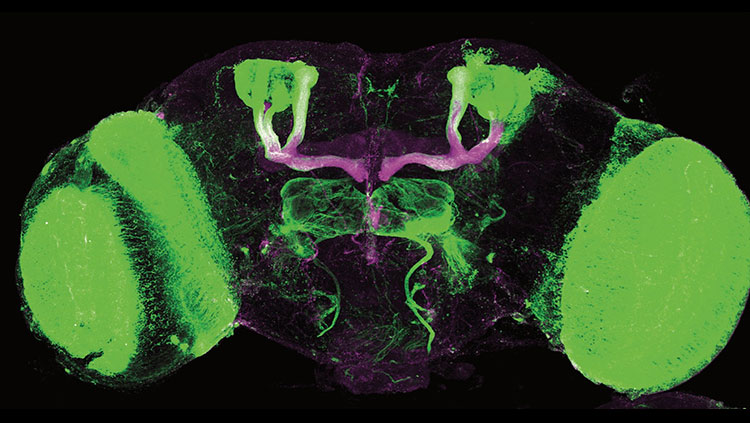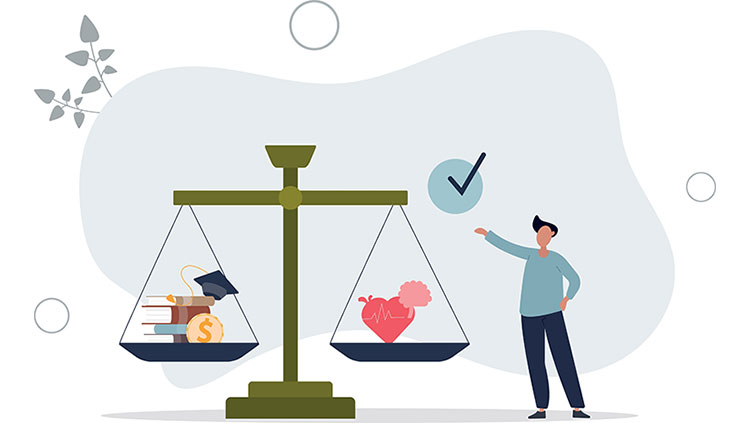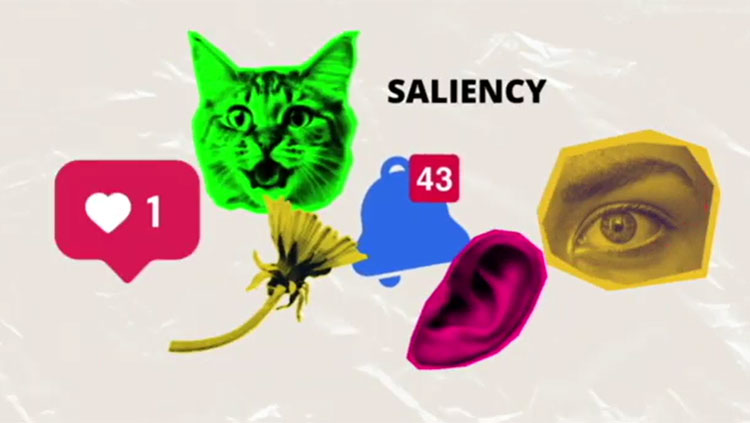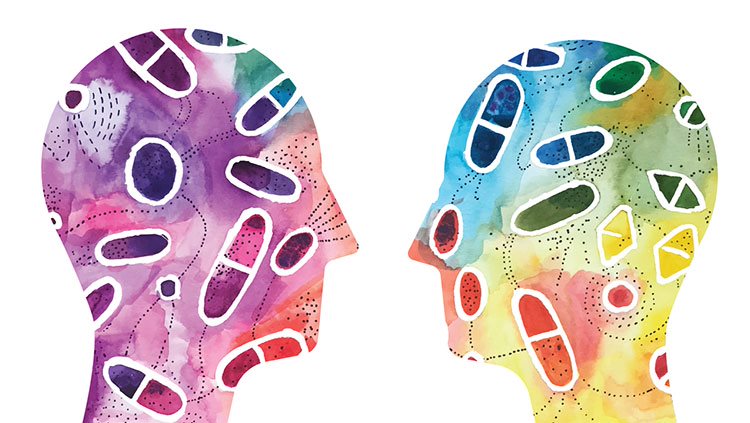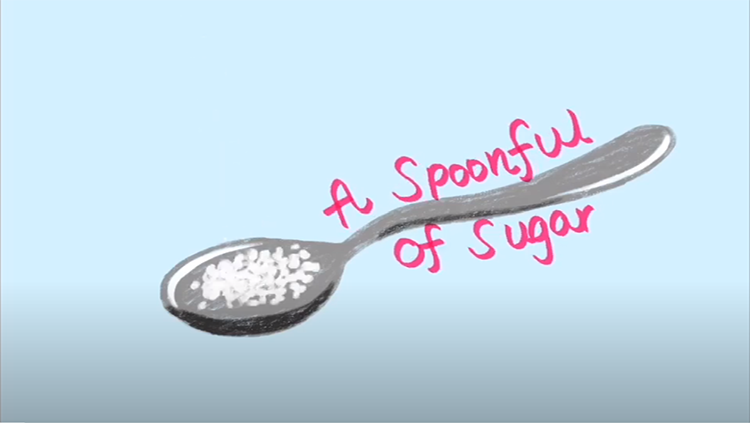This Neuroscientist Studies the Molecular Basis of Behavior
- Published8 Jul 2025
- Author Bella Isaacs-Thomas
- Source BrainFacts/SfN
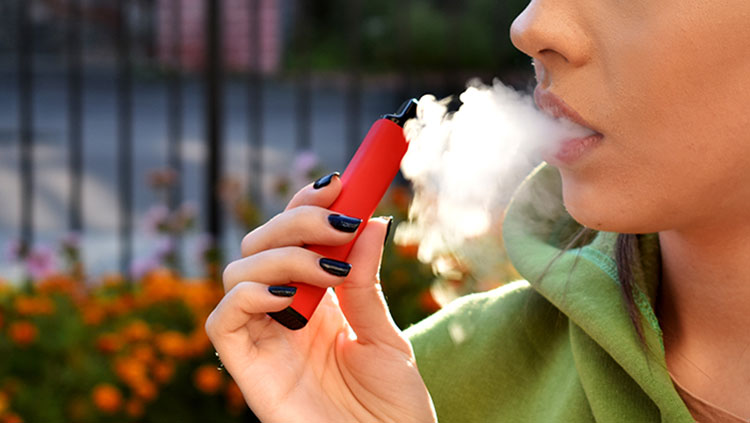
When you light up a cigarette, the smoke you inhale travels from your lungs to flood your brain with nicotine in a matter of seconds. There, this tiny molecule exerts a formidable influence on your neural architecture. Nicotine’s ability to tinker with brain cells and circuits paves the way for its addictive quality, and for the self-described benefits people who smoke report as reasons for their continued use, like sharper focus or a boosted mood.

Marina Picciotto, a neuroscientist at the Yale School of Medicine and former president of the Society for Neuroscience, is fascinated by the tangle of unseen biological forces shaping our daily lives. She’s widely known for her research on one specific thread within this jumble: nicotinic acetylcholine receptors (nAChRs), the cellular mechanism enabling nicotine to act on the body.
“If you have experience with smoking, you know about the molecular basis of behavior because you’ve taken in [a] foreign substance in this tube on fire, and it has changed how you perceive, how you feel, how you behave, and how you act,” Picciotto said.
Picciotto has spent decades exploring how nAChRs and other receptors operate in the brain, and how their activity ultimately changes people’s behavior. This nitty-gritty effort to understand how things work on the molecular level also offers a crucial knowledge base for pharmacological research, like identifying new targets for smoking cessation aids.
How Nicotine Influences the Brain
Nicotine is a famously difficult drug to quit. Today, more than a billion people around the globe use it. In the United States, an estimated 1 in 5 adults use tobacco products. Although e-cigarette use is comparatively less common, vaping is particularly popular among young adults — and that number is growing. Picciotto said nicotine’s addictiveness is rooted in the fact that nAChRs are expressed throughout the brain and body in almost every cell type.
Found in certain neurons throughout our nervous systems, these receptors can be influenced both by nicotine and by the neurotransmitter acetylcholine. This means these two different molecules — one externally introduced and the other produced by the body — can act on the same neural pathways.
nAChRs are important molecular modulators that help maintain homeostasis, or balanced signaling, across multiple circuits in the brain. They do so by stimulating a balance of excitatory and inhibitory activity among neurons. Nicotine and acetylcholine determine how these receptors do their jobs by either activating or desensitizing them, depending on conditions in the body.
When nicotine is introduced to the body, it can even infiltrate neurons’ inner machinery, where it takes on the role of a “pharmacological chaperone,” encouraging the production of more nAChRs to become fixtures on the cellular surface, said Henry Lester, a professor of biology at Caltech. Then, in the absence of nicotine, Lester and others have found acetylcholine’s inability to fully activate those receptors leads to symptoms associated with addiction.
But the unpleasantness of withdrawal — the cravings, moodiness, and difficulty sleeping — isn’t the only reason people use nicotine. The drug also directly influences how receptors involved in various behavioral systems operate, leading to noticeable changes in conscious experiences like appetite or energy level.
“If you're tired, you might smoke in order to perk yourself up. People find it focusing, so when you're doing a hard task, it makes it easier to concentrate on the difficult task,” Picciotto added. “People [also] find that it controls appetite because it works on circuits in the brainstem that are important for food seeking and satiety.”
Using Biology to Change Behavior
These days, Picciotto and her colleagues study how nAChRs and other receptors influence behavior using mouse models. But before she started studying live animals in the lab, Picciotto spent years focused on the nuts-and-bolts of biochemistry and molecular biology. A pivotal moment in her career came during her postdoctoral fellowship at the Laboratory of Molecular Neuroscience at the Institut Pasteur in Paris. The position presented Picciotto with her first opportunity to explore rodent behavior in real time.
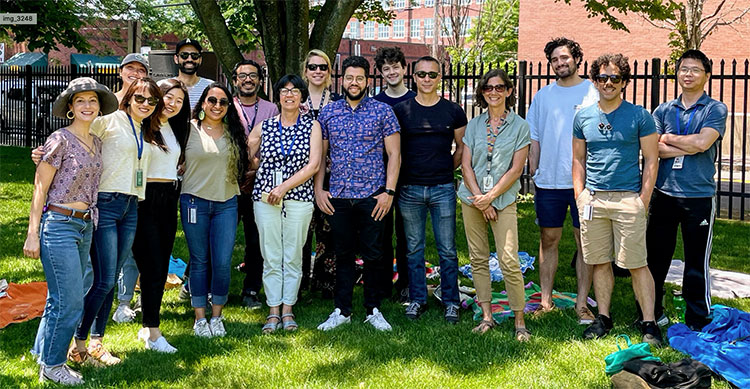
Picciotto and her team started out by choosing a subset of nAChRs, removing them from lab mice via genetic engineering, and observing how their absence affected the rodents’ behavior. The group decided to start with a subset called “beta2 nAChRs,” and their bet paid off. Without this type of nAChR, nicotine no longer acted on the mice’s reward systems, and they were not motivated to seek it out.
The group concluded that these receptors are crucial to fueling the rewarding effects of nicotine in the brain. Picciotto’s research, in addition to that of others in the field, eventually influenced the development of a medication designed to help people stop smoking.
Today, the Picciotto lab at Yale is dedicated to studying various types of acetylcholine receptors, including those that don’t respond to nicotine, and how their activity influences behavior. She and her colleagues research how this system affects mental health and addiction using mouse models. Their fundamental goal is to understand basic neurological functions which will ideally translate to the human brain, too, said Kristen Kim, a PhD student who works in the Picciotto lab.
The hope is “that we can gain a better understanding of underlying mechanisms through rodents, then use that knowledge to provide more effective treatments and therapies for people,” Kim added.
Nicotine patches and gums, for example, work by providing the body with a steady but minimal stream of the drug. This consistent supply keeps nAChRs in a stable, desensitized state, which helps people who use them avoid symptoms of withdrawal.
“They keep the receptors occupied, but they don't give the initial rush and bolus [of nicotine] that a cigarette gives,” Lester explained.
Demystifying Nicotine
Unlike other recreational drugs, nicotine is fairly unique in both how ingrained into public life it is and how relatively mild its effects are. People can openly use it while going about their days, and its use isn’t accompanied by an “overwhelming feeling of pleasure,” Picciotto noted. Nicotine’s ability to act on multiple brain systems is both why it’s widely used and abused by people, and why it’s such an intriguing molecule to study, she added.
In future research, Picciotto intends to explore nicotine’s role as a reward enhancer. Rather than simply acting as a “bomb of reward,” she said, using it can also make daily experiences feel even more enjoyable.
“That's why people smoke after a meal. It makes the meal feel better,” Picciotto said. “They smoke when they're drinking, it makes the alcohol feel better. They smoke when they're with friends, and it makes that social interaction feel better.”
Kim shares Picciotto’s intrigue with how the brain’s cellular mechanisms influence big-picture outcomes like mental health, and especially substance use disorders. Nicotine initially drew her attention because its use is so common, and because unlike drugs such as opioids or stimulants, dependence on it isn’t necessarily associated with catastrophic outcomes.
But this doesn’t mean nicotine use comes without risk. Kim noted the consequences of chronic nicotine use, and its accompanying physical dependence, can happen to people without their conscious realization. “It kind of creeps up on you sometimes,” she said.
Kim also pointed out most research into the effects of nicotine-based drugs has so far focused on traditional tobacco products rather than newer devices like e-cigarettes. Consequently, experts don’t yet know how or whether years or even decades of vaping could affect people’s health. She’s concerned federal cuts to research grants and threats to defund colleges and universities could hamper this type of research. Kim noted these cuts could also affect basic neuroscience research efforts which would otherwise inform interventions like new medical treatments or public health messaging.
“Unless we have the funding to be able to understand how these different [drugs, substances, or disorders] function, [and] what is going wrong at a basic cellular [and] molecular level, we aren't going to have the understanding to be able to protect future generations from things that could be extremely harmful,” Kim warned.
CONTENT PROVIDED BY
BrainFacts/SfN
References
Kim, K., & Picciotto, M. R. (2023). Nicotine addiction: More than just dopamine. Current Opinion in Neurobiology, 83, 102797. https://doi.org/10.1016/j.conb.2023.102797
Mineur, Y. S., Abizaid, A., Rao, Y., Salas, R., DiLeone, R. J., Gündisch, D., Diano, S., De Biasi, M., Horvath, T. L., Gao, X. B., & Picciotto, M. R. (2011). Nicotine decreases food intake through activation of POMC neurons. Science (New York, N.Y.), 332(6035), 1330–1332. https://doi.org/10.1126/science.1201889
Picciotto M. R. (2003). Nicotine as a modulator of behavior: beyond the inverted U. Trends in Pharmacological Sciences, 24(9), 493–499. https://doi.org/10.1016/S0165-6147(03)00230-X
Picciotto, M. R., Brunzell, D. H., & Caldarone, B. J. (2002). Effect of nicotine and nicotinic receptors on anxiety and depression. Neuroreport, 13(9), 1097–1106. https://doi.org/10.1097/00001756-200207020-00006
Picciotto, M. R., Caldarone, B. J., King, S. L., & Zachariou, V. (2000). Nicotinic receptors in the brain. Links between molecular biology and behavior. Neuropsychopharmacology, 22(5), 451–465. https://doi.org/10.1016/S0893-133X(99)00146-3
Picciotto, M. R., Zoli, M., Rimondini, R., Léna, C., Marubio, L. M., Pich, E. M., Fuxe, K., & Changeux, J. P. (1998). Acetylcholine receptors containing the beta2 subunit are involved in the reinforcing properties of nicotine. Nature, 391(6663), 173–177. https://doi.org/10.1038/34413
What to Read Next
Also In Addiction
Trending
Popular articles on BrainFacts.org


.jpg)

